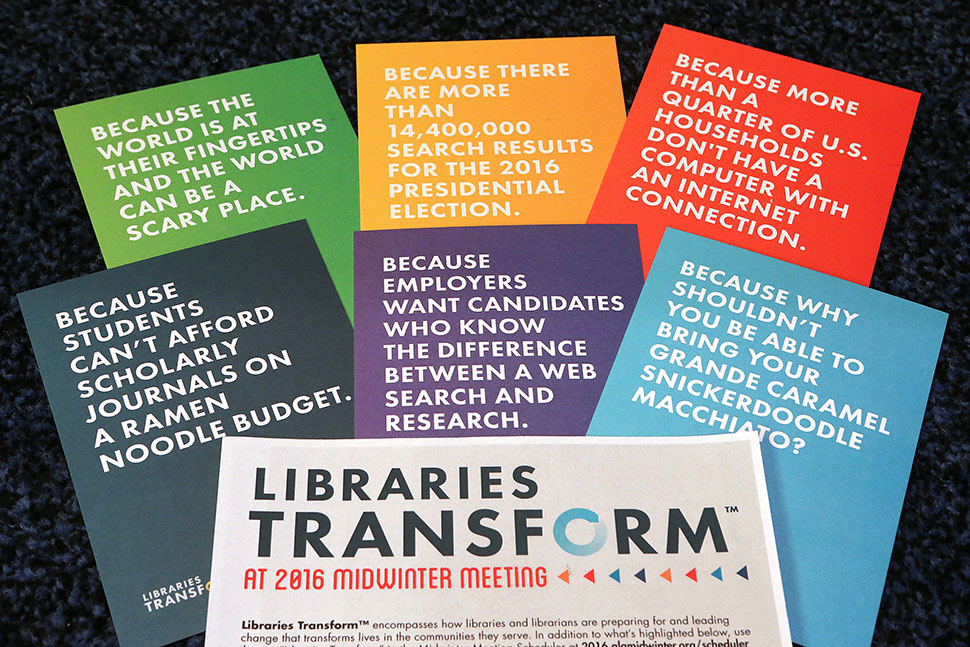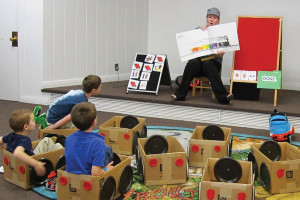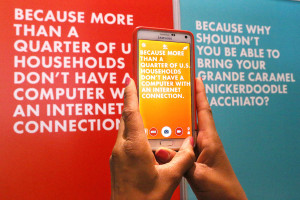
Having a transformative school library is an issue of equity.
According to its mission, the American Association of School Librarians empowers leaders to transform teaching and learning. The words “leaders” and “transform” are key. As a faculty member in a preservice program, and as a school librarian for more than 25 years, I know that’s exactly what I want my students to do when they land in libraries.
Research confirms: When credentialed school librarians lead teaching and learning in our schools’ largest classrooms, student achievement and reading scores increase.
Perhaps what the research does not show is what it looks like and what it feels like. School libraries are not merely places to get stuff. School libraries are more kitchen than grocery store. They are more transformational than transactional. Critical weeding and new design models make space for user-centered, “genrefied” collections and for messy, informal, self-directed learning. On any given day in a school library, you can hear the productive noise of collaborative invention—brainstorming, design, debate, production, storytelling, and presentation.
We teach kids to be solid digital leaders. We teach them to be kind bloggers, tweeters, and networkers, to understand, build, and take pride in their contributions and their digital footprints. Because of school librarians, when kids build media, when they remix, they know how to respect the intellectual property of others, leverage the Creative Commons movement, and flex their fair use muscles and understand its limits.
We work with classroom teachers to build creative inquiry projects and assessments. We help learners develop meaningful questions. We encourage them to critically evaluate, to triangulate authority in all formats. Our kids can mediate truth and recognize a source when it is unglued from its container. They make thoughtful, nuanced decisions about the credibility of an infographic or tweet or the authenticity of an image. Their inquiries lead to knowledge building, problem solving, meaning making, agency, and voice.
We aspire to be in their pockets and on their phones. The librarians I know were blended, flipped, and embedded before it was a thing. Our websites, guides, apps, and social media curation efforts create ubiquitous road maps. They model how teachers and students might organize their own information worlds and construct and leverage their networks.
What’s happening in our third spaces—our participatory spaces—is powerful. In times and places of narrowed and narrowly assessed learning, school libraries are spaces where creativity is nurtured and allowed to flourish. The library is a place where it is safe to be different, where we can have conversations about social justice.
We recognize that we can connect our classrooms and libraries globally, that inquiry and collaboration are no longer bound by geography. School librarians connect people. We recognize learning is social, and connected is the way people learn, work, and play. My own students loved that our Somewhat Virtual Book Club involved partner clubs from around the country and that we hosted guest experts, authors, classrooms, and other libraries from around the world via Hangouts or Skype.
Flip through any of our professional journals. Read the blogs and you’ll see practitioners sharing their experiences with fostering self-directed, informal learning through makerspaces, genius hours, problem solving through gaming. We get to know the whole child and the full range of learners. We see them before and after school, at lunch, at recess. We support differences. We know that the young woman who comes in with the history project also loves jazz, devours steampunk, and has two moms.
The transformational aspect of our jobs is transparent. Sharing their successes and reflecting on their efforts in a vibrant online community of practice, school library practitioners who blog, tweet, pin, and curate move the transformation of libraries forward.
School libraries transform learning. School librarians lead teaching and learning. Or they don’t.
Some children have access to the robust library programs I describe here. Others have never seen a school library or have seen their libraries closed.
Having a transformative school library is an issue of equity. All children deserve access to the tools they need to learn, create, and share. Access to these tools is an intellectual freedom issue.

 JOYCE KASMAN VALENZA is assistant professor of teaching at Rutgers University’s School of Communication and Information.
JOYCE KASMAN VALENZA is assistant professor of teaching at Rutgers University’s School of Communication and Information.
